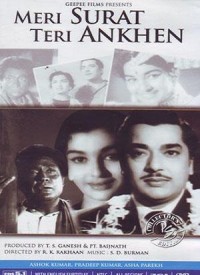Raaga Based Song of the Day: Tukade hain mere dil ke ai yaar tere aansu….
Raag Pahadi, Tal Kaherava
This is the eighth time I am taking up a song based on Raag Pahadi here, the raaga of my place in the Himalayas. I believe that in everyone’s musical life a little Pahadi must fall like a gentle rain. I took up, for the first time, a song in this raaga on the 7th day: Aaj ki raat piya dil na todo (Tal Dadra). The very next day, I took up Zara sun haseena ai nazneen (Rupaktal). On the 32nd day, it was Chal udd jaa re panchhi (Kaherava), followed by Sawan ka mahina (Kaherava) on the 46th day. And then I took a break from Pahadi for the next almost a month until I was back with Mushkil hai bahut mushkil (Kaherava) on the 72nd day. This was followed by Tum apna ranj-o-gham (Kaherava) on the 80th day and now I give you Tukade hain mere dil ke (Kaherava). Do you see a pattern? Of course you do; which is that even though Pahadi is a romantic and enchanting dhun, I have given you most songs (except two) that tilt towards regret, ruefulness and sadness. Today’s song seals it, once and for all, that the dhun does as much justice to pensive thoughts as it does to happy romantic songs like Sawan ka mahina.
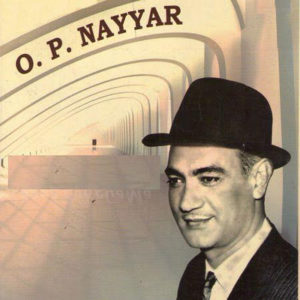 Lets have a look at all the artistes who made this song possible. Naturally, the very first one is OP Nayyar or Omkar Prasad Nayyar, the composer. I don’t know if anyone has kept track of it, but, OP Nayyar probably has the maximum percentange of hit and super-hit songs in his movies. He brought to the table signature Punjabi tunes such as Ik pardesi mera dil le gaya, Udhe jab jab zulfen teri, Reshami salwar kurta jaali ka, Sar pe topi laal haath mein resham ka rumaal, and Kajra mohabbat wala. Although there are many who believe that OP Nayyar had little or no knowledge of raagas, many of his songs have been composed in raagas, particularly his favourite Raaga Pilu and Pahadi. Being a Punjabi, he had strong likes and dislikes. For example, he didn’t have Lata Mangeshkar sing any of his songs since he didn’t find her voice “sexy enough”. Similarly, he fell apart with Mohammad Rafi in later years and shifted to mahendra Kapoor. He had Asha Bhosle sing most of his female songs until they too fell apart in 1974. This song from 1965 movie Mere Sanam is at the height of his association with both Mohammad Rafi and Asha Bhosle and they delivered outstandingly.
Lets have a look at all the artistes who made this song possible. Naturally, the very first one is OP Nayyar or Omkar Prasad Nayyar, the composer. I don’t know if anyone has kept track of it, but, OP Nayyar probably has the maximum percentange of hit and super-hit songs in his movies. He brought to the table signature Punjabi tunes such as Ik pardesi mera dil le gaya, Udhe jab jab zulfen teri, Reshami salwar kurta jaali ka, Sar pe topi laal haath mein resham ka rumaal, and Kajra mohabbat wala. Although there are many who believe that OP Nayyar had little or no knowledge of raagas, many of his songs have been composed in raagas, particularly his favourite Raaga Pilu and Pahadi. Being a Punjabi, he had strong likes and dislikes. For example, he didn’t have Lata Mangeshkar sing any of his songs since he didn’t find her voice “sexy enough”. Similarly, he fell apart with Mohammad Rafi in later years and shifted to mahendra Kapoor. He had Asha Bhosle sing most of his female songs until they too fell apart in 1974. This song from 1965 movie Mere Sanam is at the height of his association with both Mohammad Rafi and Asha Bhosle and they delivered outstandingly.
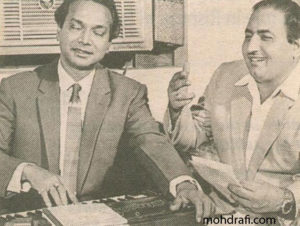
As far as the singer Mohammad Rafi is concerned, even if you write volumes about him, his singing, his modesty and gentlemanliness, these are still not enough. I was once listening to Annu Kapoor on Mastii, at late night. Annu said Mohammad Rafi once spent an entire night outside the recording studio of Naushad Ali so that the latter would finish recording and give Rafi the busfare to go home. Now, Naushad was also a workalohic and some sort of perfectionist. Hence, it was in the wee hours that Naushad appeared from the studio and found Rafi waiting outside to be given busfare to go home. Naushad felt bad that a great singer like Rafi should be so waiting and hence told him, “You could have just knocked at the door.” This is what Mohammad Rafi replied, “I couldn’t have ever thought of disturbing you in your work.” Take this song itself. It is so typical of the gentlemanliness that Rafi possessed: always being mindful of the feelings of others, especially women. It was concerned the chivalrous thing for gentlemen to do as far as ladies were concerned. Compare this with Yesudas‘s, “Maana ke ho tum behadd haseen, aise bure ham bhi nahin”, trying to compete with the lady. No wonder, Yesudas courted controversy in Oct 2014 by his ill thought of remark, “What should be covered must be covered. Women should not trouble others by wearing jeans.”
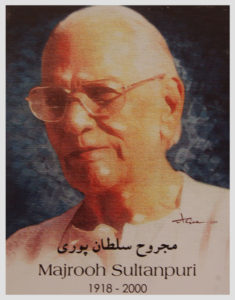 The lyricist of this song is Majrooh Sultanpuri, the only lyricist to have been awarded the highest in Indian Cinema: the Dadasaheb Phalke Award. His art was quite a mixed bag: on one hand he would write excellent Urdu poetry such as Bane ho ek khaak se to duur kya kareeb kya; on the other hand he kept dishing out forgettable songs with Chitragupta (except for a few of them). His forte’ was however romantic, enchanting songs such as Deewana mastaana hua dil, and Tum bin jaayun kahan. This movie gave him ample opportunity to brush up his art.
The lyricist of this song is Majrooh Sultanpuri, the only lyricist to have been awarded the highest in Indian Cinema: the Dadasaheb Phalke Award. His art was quite a mixed bag: on one hand he would write excellent Urdu poetry such as Bane ho ek khaak se to duur kya kareeb kya; on the other hand he kept dishing out forgettable songs with Chitragupta (except for a few of them). His forte’ was however romantic, enchanting songs such as Deewana mastaana hua dil, and Tum bin jaayun kahan. This movie gave him ample opportunity to brush up his art.
We have completed eighty-two days of Raaga Based Songs of the Day. Our first post in the series was titled ‘Raaga Based Song Of The Day #1’ and the song was a Mohammad Rafi and Lata Mangeshkar song from the 1970 Shakti Samanta movie Pagla Kahin Ka: Tum mujhe youn bhula na paoge. It is in Raag Jhinjhoti, Tal Kaherava.
Our eighty-second post or the last post was titled ‘Raaga Based Song Of The Day #82‘ and the song was an Udit Narayan and Alka Yagnik song from the 2001 Farhan Akhtar movie Dil Chahta Hai starring Aamir Khan, Preity Zinta, Saif Ali Khan, and Akshay Khanna: Jaane kyun log pyaar karte hain. It is in Raag Nattakurinji, Tal Kaherava.
This blog has a number of posts on Raaga based songs in Hindi movies titled similarly; for example: ‘The Best Raaga Based Songs in Hindi Movies – Raaga Jaijaivanti‘.
In the last eighty-one days of sharing Raaga based songs of the day, I have given you songs based on Raag Jhinjhoti, Gara, Bhimpalasi, Madhuvanti, Shivaranjani, Bihag, Pahadi, Sarang, Pilu, Bhairavi, Khammaj, Charukesi, Kalyan or Yaman, Desh, Malgunji, Kirwani, Kedar, Bageshri, Megh Malhar, Bhupali, Ahir Bhairav, Malkaush, Mand, Adana, Kafi, Rageshri, Jaunpuri, Tilang, Janasammohini, Chayanat, Shuddha Kalyan, Gaur Sarang, Jogiya, Asavari, Maru Bihag, Durga, Lalit, Puria Dhanashri, Bhinna Sahdja, Sohani, Multani, Patdeep, Jaijaiwanti, Tilak Kamod, Hemant, Basant Mukhari, Gujri Todi, Kalavati, Hamir, Bhatiyar, Gawati, Shyam Kalyan, Gorakh Kalyan, Madhamat Sarang, Manj Khammaj, Darbari Kanada, Vibhas, Shankara, Bahar, Nand and Mian Ki Malhar; making it a total of 61 raagas. The raagas that have been repeated so far are Pahadi, the raaga of my home place in the Himalayas, Maru Bihag, Raag Kirwani, Jhinjhoti, Bhairavi, Gara, Basant Mukhari, Malkauns, Bhairavi and Mand. Today, I am repeating Raag Pahadi for the eighth time.
Today’s song has been sung by Mohammad Rafi on the lyrics of Majrooh Sultanpuri and composition by OP Nayyar. As I said, it is in Raag Pahadi, Tal Kaherava. The song is picturised on Biswajit and Asha Parekh in the 1965 GP Sippy production and Amar Kumar directed movie Mere Sanam.
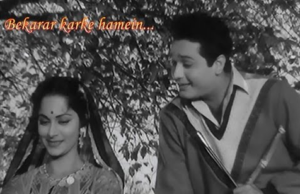 Lets first take up Biswajit Ranjitkumar Chatterjee, the actor, and the director of his own 1975 production Kehte Hain Mujhako Raja. He is a singer too and performs in concerts. After acting in Bengali movies in Calcutta, he made his debut in 1962 in Hindi movies with Bees Saal Baad with Waheeda Rehman. The movie had two beautiful Hemant Kumar songs picturised on him: Beqraar karke hamen youn na jayiye, and Zara nazaron se kehdo ji; both the songs having been penned by my favourite lyricist: Shakeel Badayuni.
Lets first take up Biswajit Ranjitkumar Chatterjee, the actor, and the director of his own 1975 production Kehte Hain Mujhako Raja. He is a singer too and performs in concerts. After acting in Bengali movies in Calcutta, he made his debut in 1962 in Hindi movies with Bees Saal Baad with Waheeda Rehman. The movie had two beautiful Hemant Kumar songs picturised on him: Beqraar karke hamen youn na jayiye, and Zara nazaron se kehdo ji; both the songs having been penned by my favourite lyricist: Shakeel Badayuni.
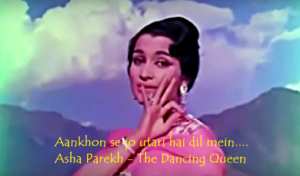 Asha Parekh was born on Mahatma Gandhi’s birthday in his state Gujarat, in the year when Gandhi started Quit India movement against the British. After having done a few movies as a child-artiste, she was rejected by Vijay Bhatt for the role of a heroine in his movie Goonj Uthi Shehnai. Finally, she became the find of Nasir Hussain, who cast her as a heroine opposite Shammi Kapoor in his 1960 movie Dil Deke Dekho. She soon emerged not just as a huge star but also earned the sobriquet of being the Dancing Queen. Two of her early successes are Jab Pyar Kisi Se Hota Hai with Dev Anand with that most enchanting and ever-fresh duet: Sau saal pehle mujhe tumase pyaar tha, and Phir Wohi Dil Laya Hoon with Joy Mukherjee, which too had songs composed by OP Nayyar such as Aankhon se jo utari hai dil mein, and Zulfon ki chhaon mein chehre ko ujala dekar.
Asha Parekh was born on Mahatma Gandhi’s birthday in his state Gujarat, in the year when Gandhi started Quit India movement against the British. After having done a few movies as a child-artiste, she was rejected by Vijay Bhatt for the role of a heroine in his movie Goonj Uthi Shehnai. Finally, she became the find of Nasir Hussain, who cast her as a heroine opposite Shammi Kapoor in his 1960 movie Dil Deke Dekho. She soon emerged not just as a huge star but also earned the sobriquet of being the Dancing Queen. Two of her early successes are Jab Pyar Kisi Se Hota Hai with Dev Anand with that most enchanting and ever-fresh duet: Sau saal pehle mujhe tumase pyaar tha, and Phir Wohi Dil Laya Hoon with Joy Mukherjee, which too had songs composed by OP Nayyar such as Aankhon se jo utari hai dil mein, and Zulfon ki chhaon mein chehre ko ujala dekar.
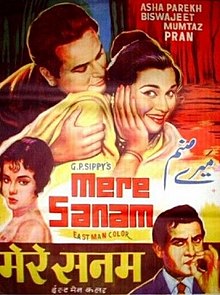 Lets get to the movie: Mere Sanam. As I said, this 1965 GP Sippy production and Amar Kumar direction movie starred Asha Parekh, Biswajit, Pran, Mumtaz and Rajendra Nath. The movie is a remake of Come September which is a 1961 romantic comedy film directed by Robert Mulligan, and starring Rock Hudson, Gina Lollobrigida, Sandra Dee and Bobby Darin. The best part of this copied story movie is that the copy, in India, did as well at the original and was a box-office success. Its songs are still fresh with the people and like in another movie of OP Nayyar: Kashmir Ki Kali, the songs have the freshness of the Kashmir valley.
Lets get to the movie: Mere Sanam. As I said, this 1965 GP Sippy production and Amar Kumar direction movie starred Asha Parekh, Biswajit, Pran, Mumtaz and Rajendra Nath. The movie is a remake of Come September which is a 1961 romantic comedy film directed by Robert Mulligan, and starring Rock Hudson, Gina Lollobrigida, Sandra Dee and Bobby Darin. The best part of this copied story movie is that the copy, in India, did as well at the original and was a box-office success. Its songs are still fresh with the people and like in another movie of OP Nayyar: Kashmir Ki Kali, the songs have the freshness of the Kashmir valley.
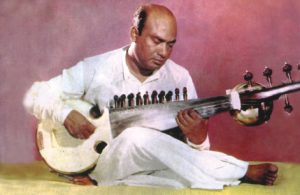 Before we actually take up the song, first, lets take up the value added learning of today. From the last time onwards we started learning about some of the leading personalities in Indian Classical Music or Shastriya Sangeet. The first one that we took up was Ustaad Asad Ali Khan, the finest Rudra Veena player in the country. Then we took up Pandit Hari Parsad Chaurasia, the greatest Bansuri player in the country. Tonight, lets talk about Ali Akbar Khan, the greatest Sarod player in the country.
Before we actually take up the song, first, lets take up the value added learning of today. From the last time onwards we started learning about some of the leading personalities in Indian Classical Music or Shastriya Sangeet. The first one that we took up was Ustaad Asad Ali Khan, the finest Rudra Veena player in the country. Then we took up Pandit Hari Parsad Chaurasia, the greatest Bansuri player in the country. Tonight, lets talk about Ali Akbar Khan, the greatest Sarod player in the country.
You would recall I told you about Sarod when I was covering Hindustani Musical instruments (Please see ‘Raaga Based Song Of The Day #45‘). Ali Akbar Khan was born on 14 Apr 1922 in the village of Shibpur, Nabinagar Upazila, Brahmanbaria, in present-day Bangladesh, (then Comilla, East Bengal), to renowned musician and teacher, Allauddin Khan and Madina Begum. Soon after his birth, Khan’s family returned to Maihar (in present-day Madhya Pradesh, India) where his father was the primary court musician for the Maharaja of the princely state. Hence, Ustaad Ali Akbar Khan belongs to Maihar Gharana.
In addition to classical music performances, Ali Akbar Khan composed a few songs in movies, the famous one being Har kisi pe shaadmani sung by Lata Mangeshkar in Chetan Anand’s 1952 movie Aandhiyan.
He performed in India and traveled extensively in the West. In 1956, Khan founded the Ali Akbar College of Music in Calcutta, with the mission to teach and spread Indian classical music. He founded another school of the same name in Berkeley, California in 1967 and later moved it to San Rafael, California.
He is the recipient of many awards; Padma Bhushan in 1967 and Padma Vibhushan in 1989 being two of the highest.
As I said, today’s song is in Raag Pahadi, Tal Kaherava and I have told you a lot about this raaga already.
Why do I have this urge to get back to Pahadi? On the tenth day, I had covered for you, the sources of names of raagas and mentioned that raagas like Marwa, Jaunpuri, Mand and Pahadi were named after places. Pahadi is not a place, in the same manner, as Marwa, Mand and Jaunpur. You should expect Pahadi anywhere you see pahad or hills but actually the name is from hills in Himalayas, my home place. It is a light raaga and is more akin to being a dhun.
Pahadi is a very beautiful raag. Soundofindia.com describes it beautifully: the raga is like a lover, unruffled in union, serene in separation, powerful enough to achieve eternal union, but resigned to the painful parting ordained by destiny.
All raagas are supposed to transport you to the mood of the raaga (bhaav). But, none other does it better than Pahadi: you can’t escape the freshness, quiet, wetness, echoing effect and palpable romance of the hills. It is as if the raaga says to you: ‘Love is in the air’.
I am not giving you again a list of songs composed in Raag Pahadi as I have already given you this elsewhere.
The song Tukade hain mere dil ke ai yaar tere aansu is from the 1965 Amar Kumar movie Mere Sanam. As I said, OP Nayyar had a record of hit and super-hit songs in his movies. Have a look at the complete list of songs of this movie:
| 1 | “Roka Kayi Baar Maine Dil Ki Umang Ko” | Asha Bhosle & Mohammed Rafi | 05:58 |
| 2 | “Yeh Ab Kya Sochiye” | Asha Bhosle & Mohammed Rafi | 04:50 |
| 3 | “Pukarta Chala Hoon Main” | Mohammed Rafi | 03:52 |
| 4 | “Jaaiye Aap Kahaan Jaayenge” | Asha Bhosle & Mohammed Rafi | 06:29 |
| 5 | “Ye Hai Reshmi Zulfon Ka Andhera” | Asha Bhosle | 03:22 |
| 6 | “Humdum Mere Maan Bhi Jaao” | Mohammed Rafi | 04:32 |
| 7 | “Tukde Hain Mere Dil Ke” | Mohammed Rafi | 03:30 |
| 8 | “Hue Hain Tumpe Aashiq Hum” | Mohammed Rafi | 04:02 |
| 9 | “Haaji Haaji Haaji Arrey Haaji Baba” | Asha Bhosle & Mohammed Rafi | 04:40 |
Please enjoy in Raag Pahadi, Tal Kaherava: Tukade hain mere dil ke ai yaar tere aansu ….
(Tuka.De hai.n mere dil ke, e yaar tere aa.Nsuu
Dekhe nahii.n jaate hai.n, diladaar tere aa.Nsuu ) – 2
Katare nahii.n chhalake ye, aa.Nkho.n ke piyaalo.n se
Motii hai.n muhobbat ke, in phuul se gaalo.n pe, in phuul
Bahane nahii.n duu.ngaa bekaar tere aa.Nsuu
Dekhe nahii.n jaate
Ashko.n se bharaa dekhuu.N kaise terii aa.Nkho.n ko
Ai jaan ye sulagataa Gam, de de merii aa.Nkho.n ko, de de merii
Palako.n pe uThaa luu.ngaa, sau baar tere aa.Nsuu
Dekhe nahii.n jaate
We have intended to learn about Raaga based music whilst we entertain ourselves with Raaga based songs. So, lets, once again, take stock of our collective learning so far:
- On the first day we learnt about the Raaga system devised by Pandit Vishnu Narayan Bhatkhande, which is the prevalent system in Hindustani Classical Music and based on ten Thaats.
- On the second day we learnt about Tal or Taal.
- On the third day we learnt about characteristics of Raagas that included Swar, Jati, Thaat, Arohana and Avarohana, Vadi, Samvadi and Pakad.
- On the fourth day, we learnt about Sargam.
- On the fifth day, we learnt about notations used in Indian classical music or simply Swar Lipi.
- On the sixth day, we learnt about the Ras (sentiments) that Raagas evoke.
- On the seventh day, we learnt about various types of Swar: Shuddha, Achal, Vikrut, Komal and Teevra.
- On the eighth day, we learnt the parts of a composition in Indian Classical Music.
- On the ninth day, we learnt the names of some of the popular instruments used in Indian Classical Music.
- On the tenth day, we learnt about the sources of names of Raagas.
- On the eleventh day, we learnt about why Bhairavi is the first raag to be taught to beginners and also why it is the last in a performance.
- On the twelfth day, we learnt about Khammaj Thaat.
- On the thirteenth day, we learnt about Tal Punjabi Theka or Sitarkhani.
- On the fourteenth day, we learnt about Alap.
- On the fifteenth day, we learnt about List of Raagas (Raagmala) in my favourite book: Sri Guru Granth Sahib.
- On the sixteenth day, we learnt about tips for raaga identification.
- On the seventeenth day, we learnt the basics of Gharana system.
- On the eighteenth day, we learnt about Filmi Sangeet.
- On the nineteenth day, we learnt about the commonest Tal in Raagas: Tintal.
- On the twentieth day, we learnt about the Kafi Thaat.
- On the twenty-first day, we learnt a little more in detail about the classification of Raagas.
- On the twenty-second day, we learnt the essential differences between Bhairavi and Bhairav.
- On the twenty-third day, we learnt a little more in detail about the Jati or Jaati of a raaga.
- On the twenty-fourth day, we learnt details of Thaat Bilawal, the most basic thaat in the Bhatkhande’s system of raagas.
- On the twenty-fifth day, we learnt about Tintal.
- On the twenty-sixth day, we learnt in detail about the Raaga – Samay linkage.
- On the twenty-seventh day, we learnt about Lehar.
- On the twenty-eighth day, we learnt about the history of the Hindustani Music.
- On the twenty-ninth day, we learnt about Dhrupad.
- On the thirtieth day, we learnt about Rupaktal that I was introduced to, a few months back, by my friend Anand Desai.
- On the thirty-first day, we learnt about Khayal.
- On the thirty-second day, we learnt about Thumri.
- On the thirty-third day, we learnt about Tappa.
- On the thirty-fourth day, we learnt about Tarana.
- On the thirty-fifth day, we learnt about Tal Dipchandi (Moghali).
- On the thirty-sixth day, we learnt about Tabla.
- On the thirty-seventh day, we learnt about Kirtan.
- On the thirty-eighth day, we learnt about Pakhawaj.
- On the thirty-ninth day, we learnt about Hori.
- On the fortieth day, we learnt about Dadra.
- On the forty-first day, we learnt about Kajri.
- On the forty-second day, we learnt about Chaiti.
- On the forty-third day, we learnt about Sarangi.
- On the forty-fourth day, we learnt about Shehnai.
- On the forty-fifth day, we learnt about Sarod.
- On the forty-sixth day, we learnt about Bansuri.
- On the forty-seventh day, we learnt about Ektal and Tanpura.
- On the forty-eighth day, we learnt about Veena.
- On the forty-ninth day, we repeated our learning of Veena with a small excitement added.
- On the fiftieth day, we learnt about Dilruba/Esraj.
- On the fifty-first day, we learnt about Jaltarang.
- On the fifty-second day we learnt about Qawwali.
- On the fifty-third day, we learnt about Sitar.
- On the fifty-fourth day, we learnt about Surbahar.
- On the fifty-fifth day, we learnt about Harmonium.
- On the fifty-sixth day, we learnt about Santoor.
- On the fifty-seventh day, we learnt about Swarmandal.
- On the fifty-eighth day, we learnt about the Shruti Box.
- On the fifty-ninth day, we learnt about Alankar.
- On the sixtieth day, we learnt about singing in Aakaar.
- On the sixty-first day, we learnt about the Classification of Indian Musical Instruments.
- On the sixty-second day, we learnt a little about Carnatic Music.
- On the sixty-third day, we learnt about Natya Shastra.
- On the sixty-fourth day, we learnt about evolution of musical instruments in India down the ages.
- On the sixty-fifth day, we learnt about Riyaaz.
- On the sixty-sixth day, we looked at a list of Raagas in Hindustani Classical Music.
- On the sixty-seventh day, we learnt about the health benefits of raagas.
- On the sixty-eighth day, we learnt a little more comprehensively about the moods and emotions that raagas evoke.
- On the sixty-ninth day, we learnt about a mobile application to help identify raagas.
- On the seventieth day, we learnt about Melakarta Raagas.
- On the seventy-first day, we learnt about Sangita Makarand.
- On the seventy-second day, we learnt about TaalMala an Android application for personalized accompaniment of musical instruments during Riyaaz or even during Concert.
- On the seventy-third day, we learnt about Indian Classical Ragas, an Android application for mobile phones.
- On the seventy-fourth day, we learnt about Saregama Classical, another application for Classical Raagas.
- On the seventy-fifth day, we learnt about a free online service available to learn Indian Classical Music.
- On the seventy-sixth day, we learnt about List of Hindustani Classical Musical Festivals in India and Abroad.
- On the seventy-seventh day, we learnt about List of Carnatic Musical Festivals in India and Abroad.
- On the seventy-eighth day, we learnt about Jhaptal.
- On the seventy-ninth day, we learnt about Ektal.
- On the eightieth day, we learnt about Tivra Tal.
- On the eighty-first day, we learnt about the greatest Rudra Veena player ever: Ustaad Asad Ali Khan.
- On the eighty-second day, we learnt about the greatest Bansuri player alive: Pandit Hariprasad Chaurasia.
- And today, on the eight-third day, we learnt about the best Sarod player in the country: Ustaad Ali Akbar Khan.
There is much more still to be learnt and enjoyed.
Please stay tuned!
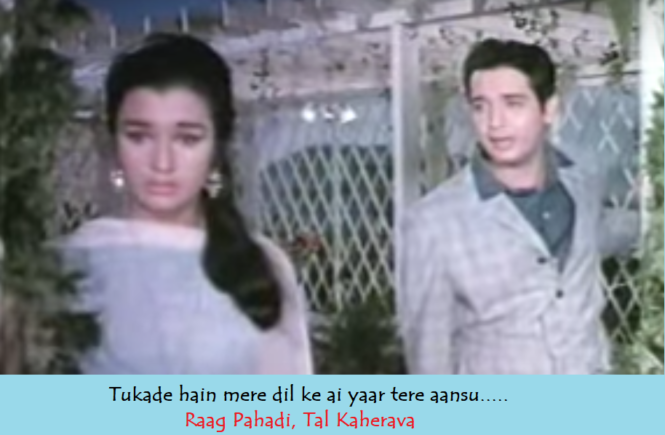
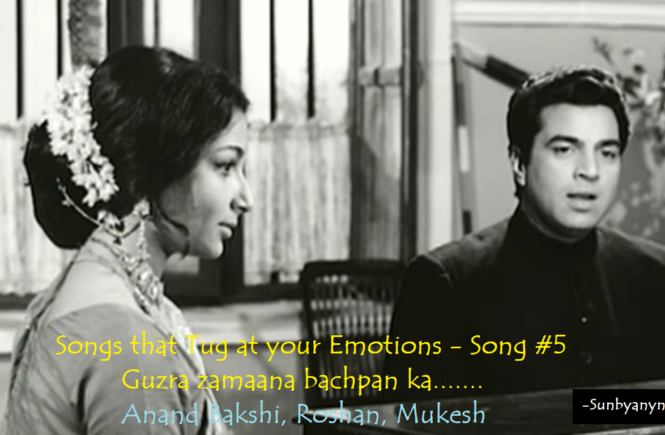
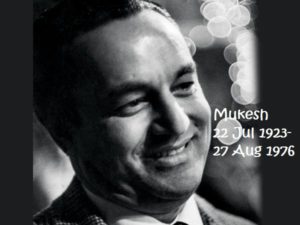 Today’s singer,
Today’s singer, 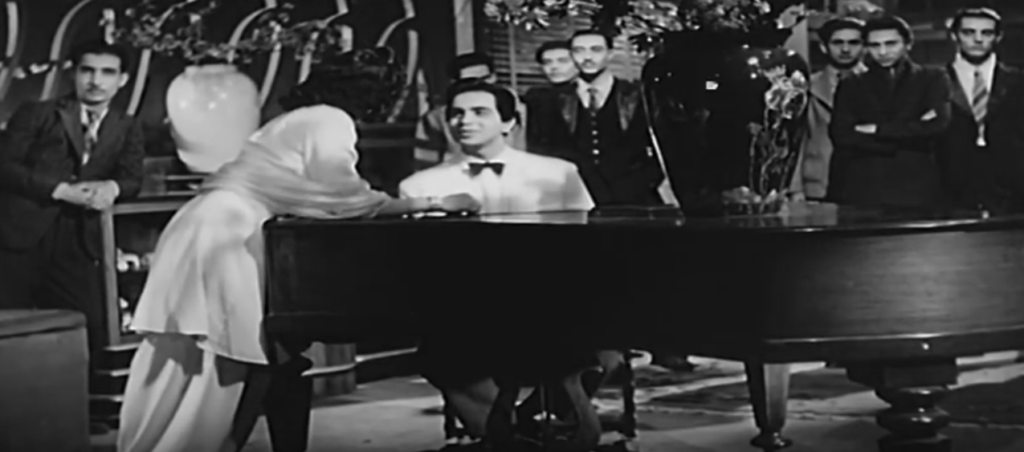
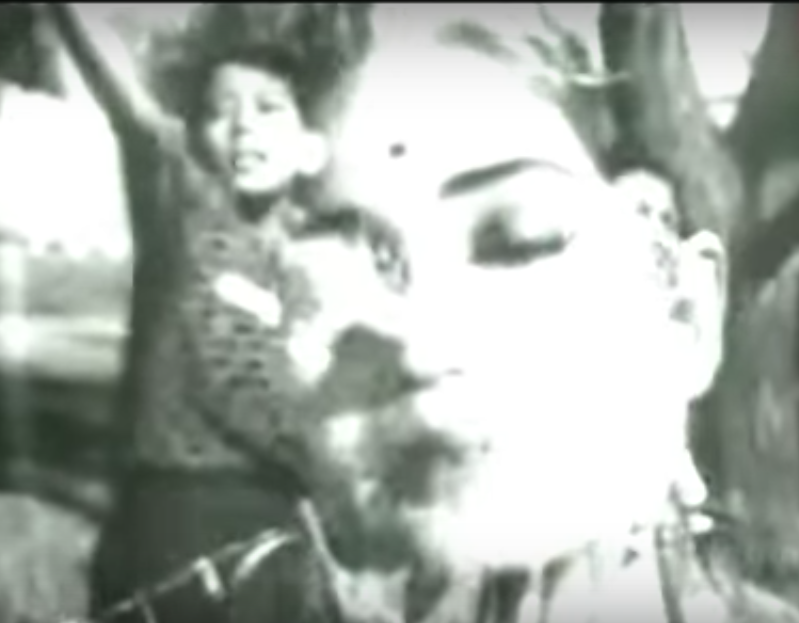
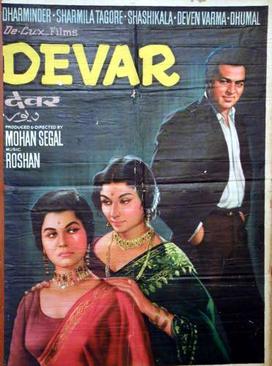
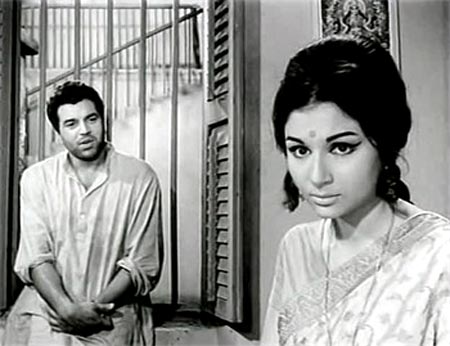
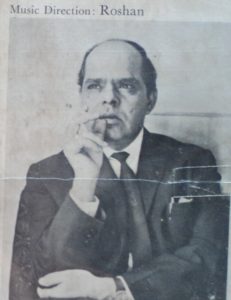 The composer of the song is
The composer of the song is 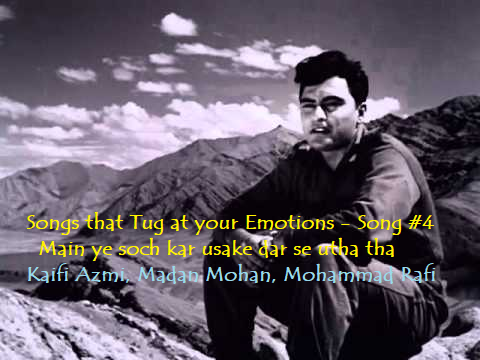
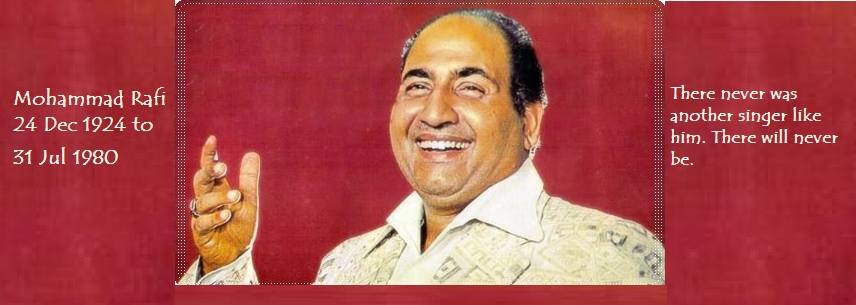
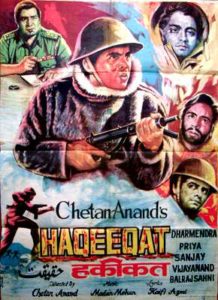 Take this song from
Take this song from 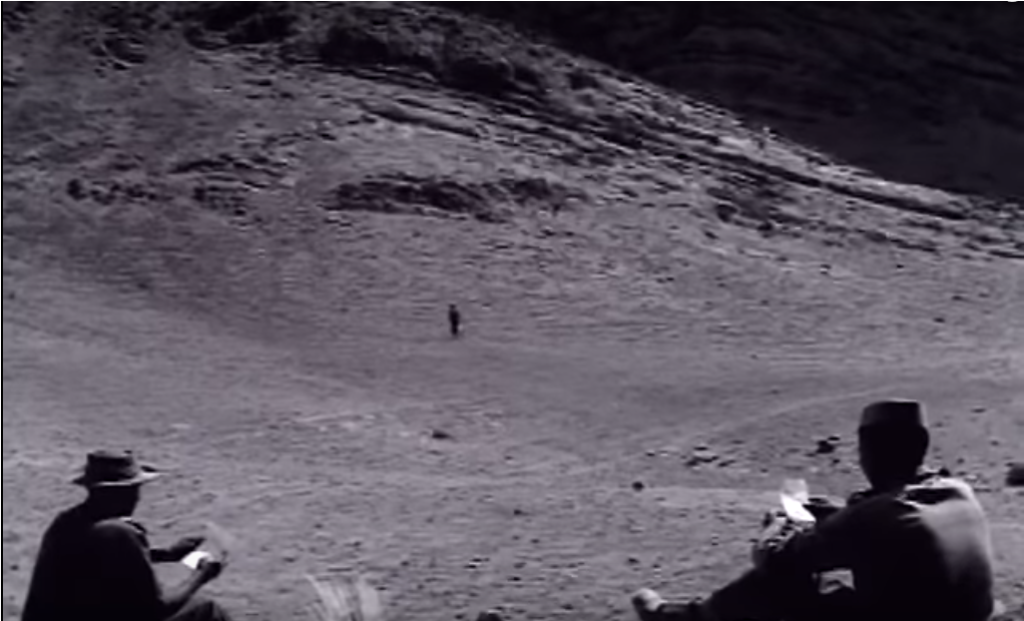
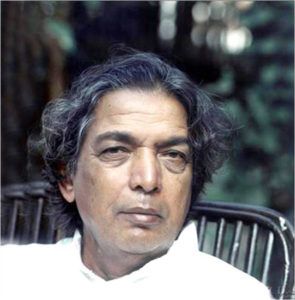 Of all the lyricists that I know of,
Of all the lyricists that I know of, 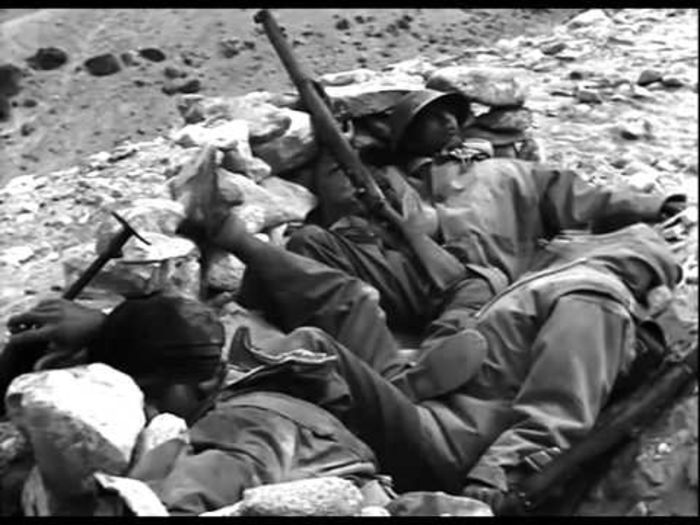
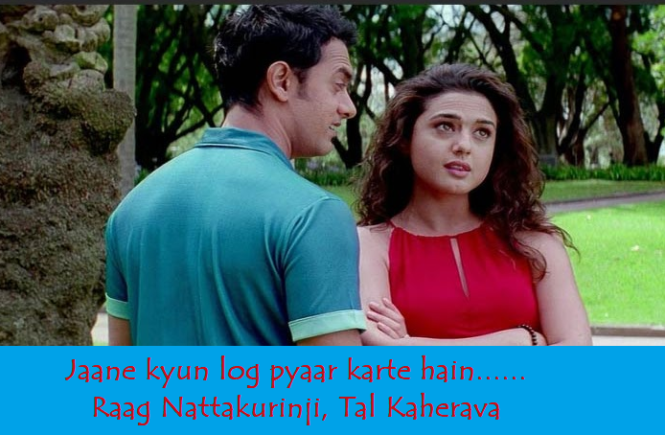
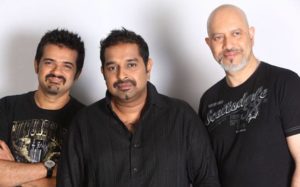
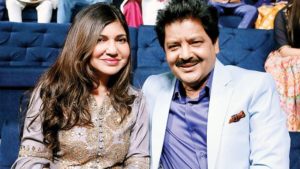
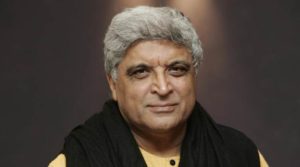
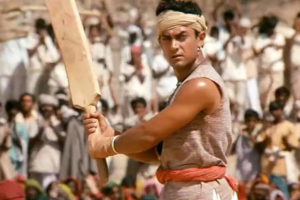
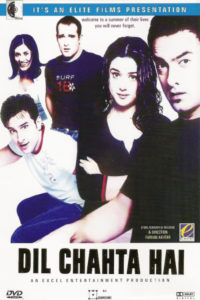 Lets get to the movie:
Lets get to the movie: 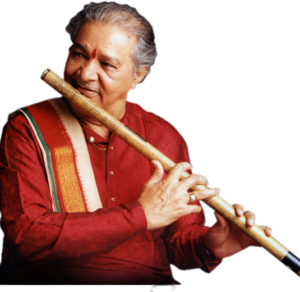 Before we actually take up the song, first, lets take up the
Before we actually take up the song, first, lets take up the 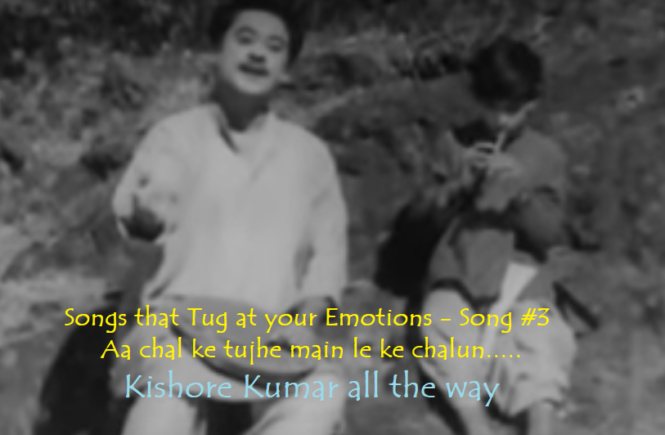
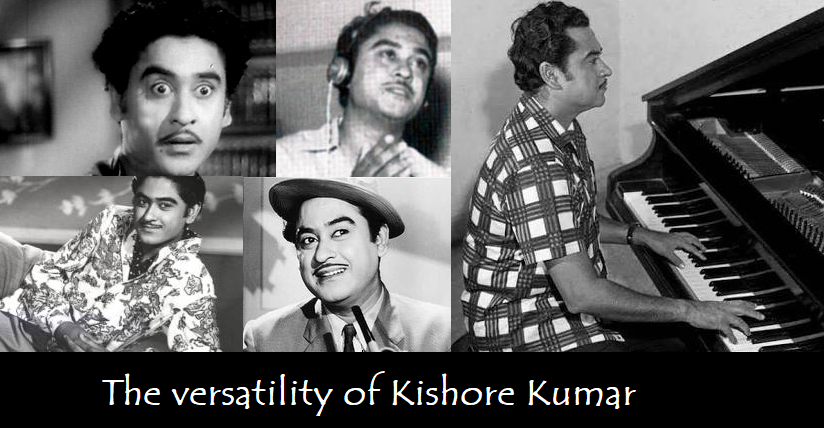
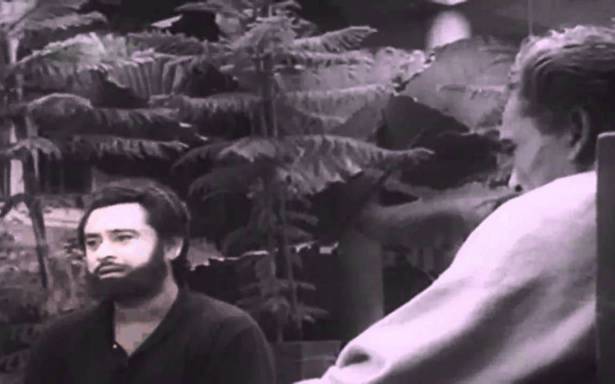
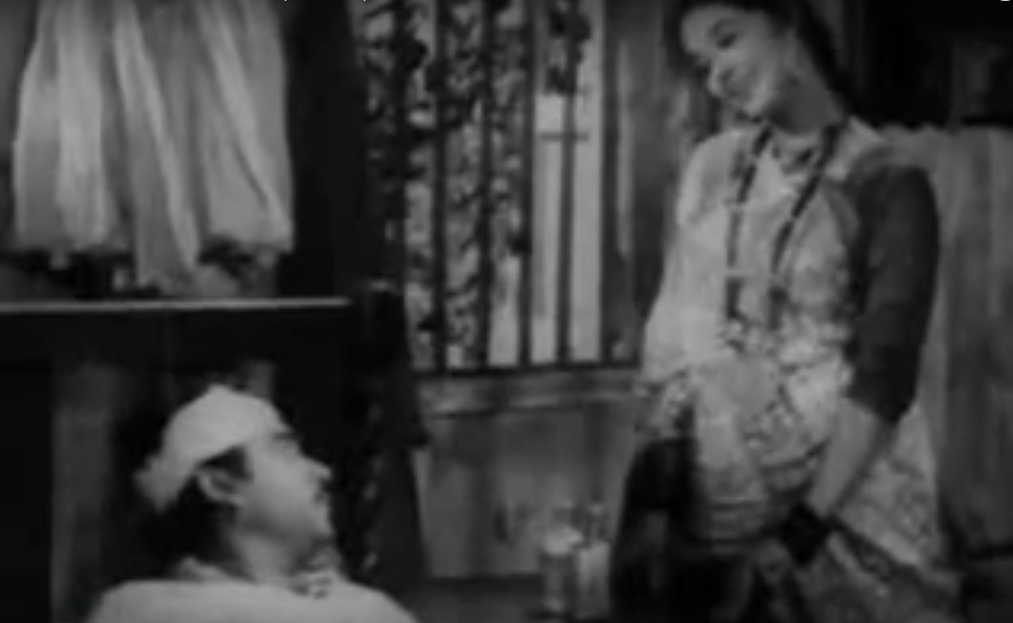
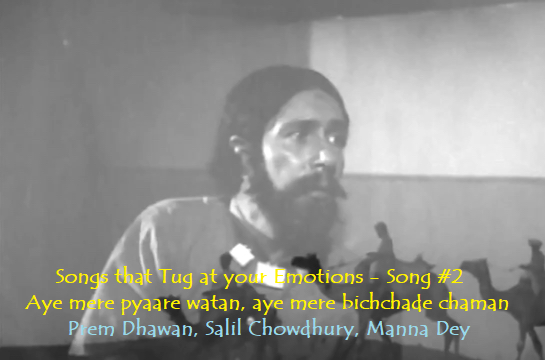
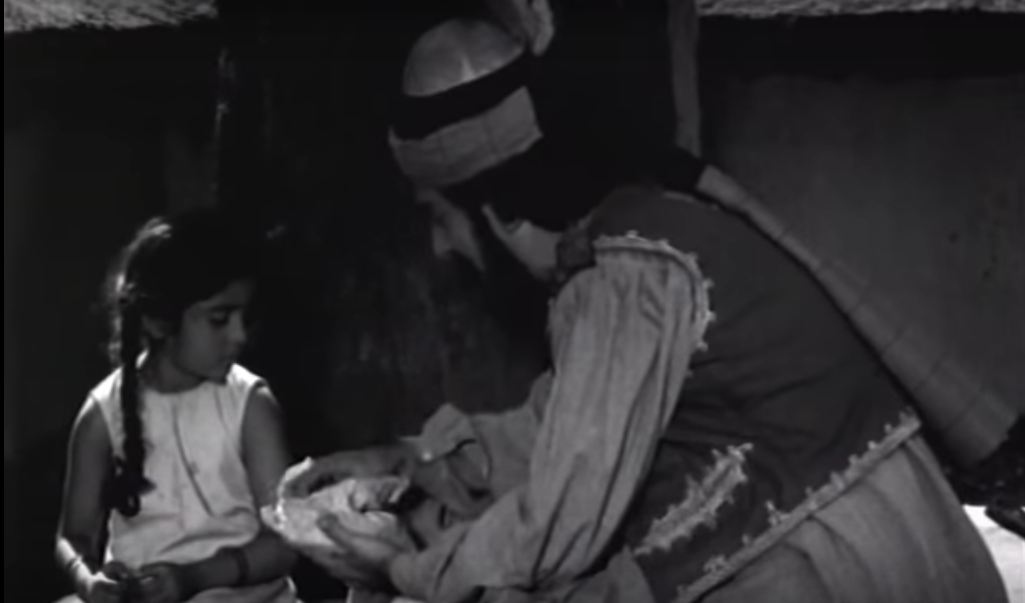
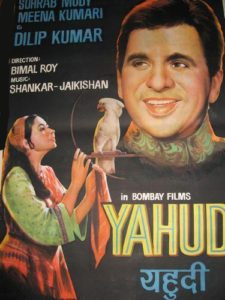
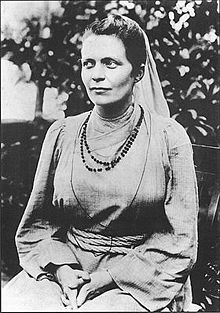
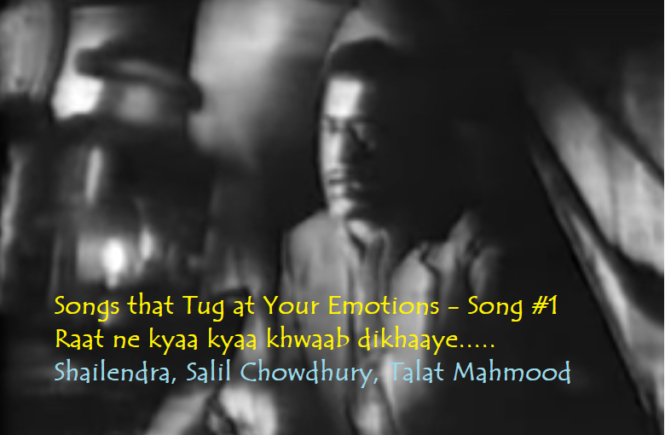
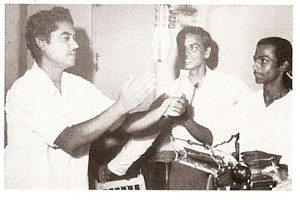
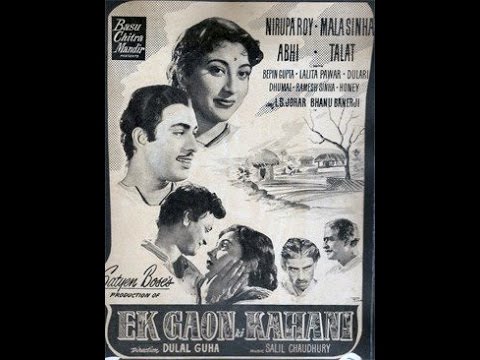
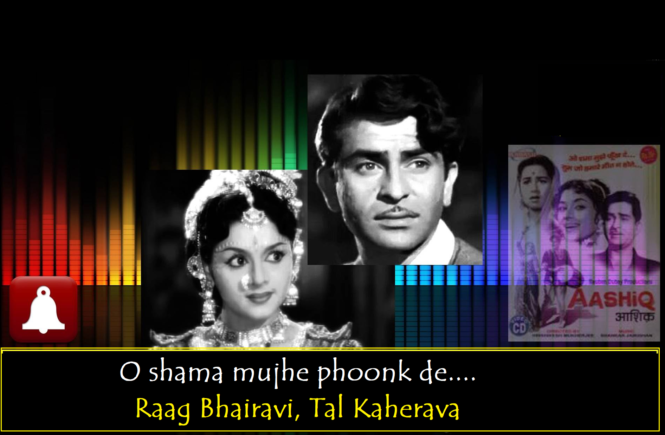
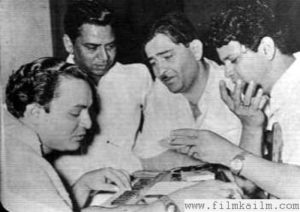
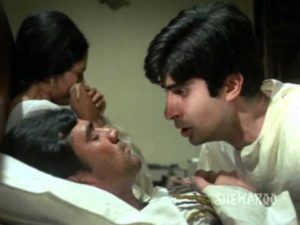
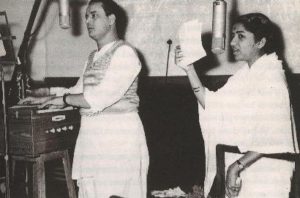
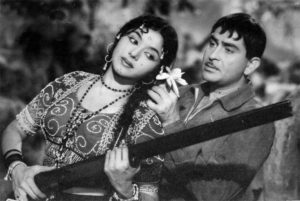
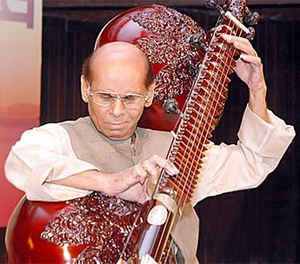
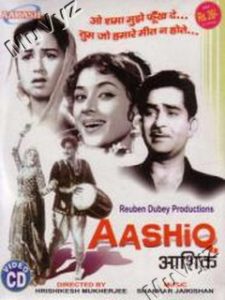
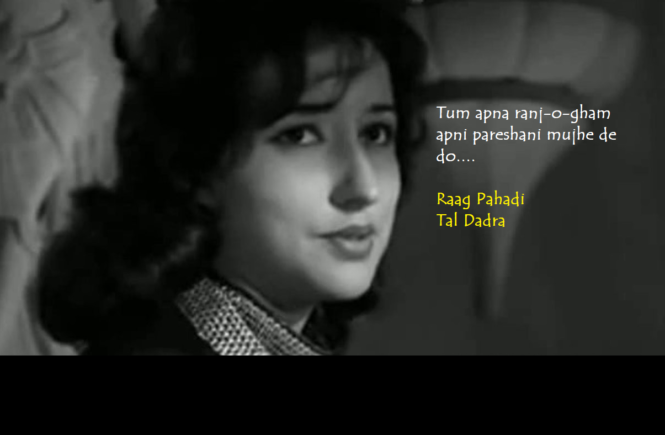
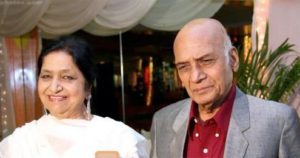
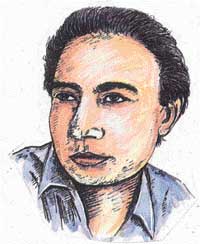 Sahir Ludhianvi
Sahir Ludhianvi
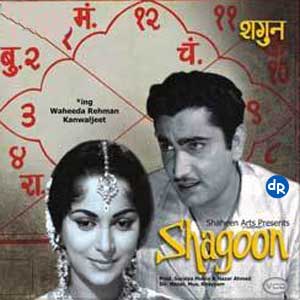 The song
The song 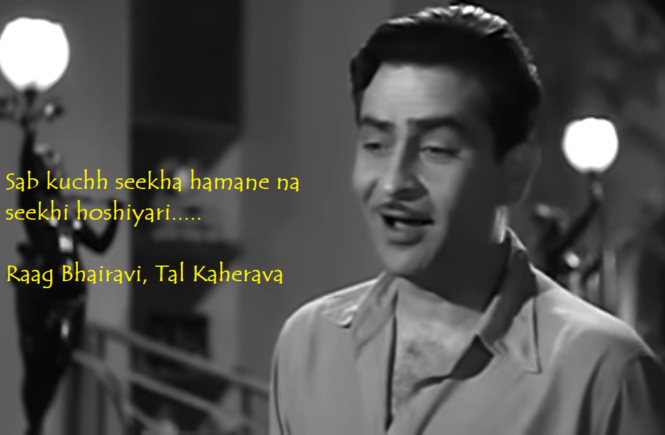
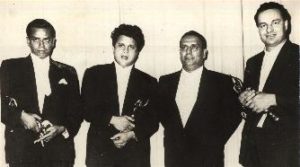
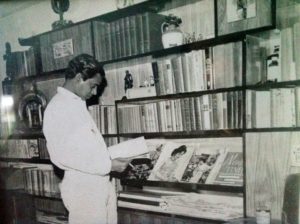
 As far as singer
As far as singer 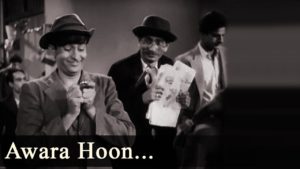

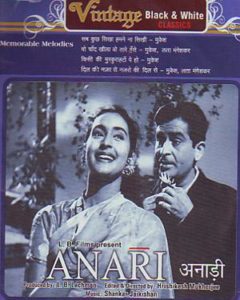 The song
The song 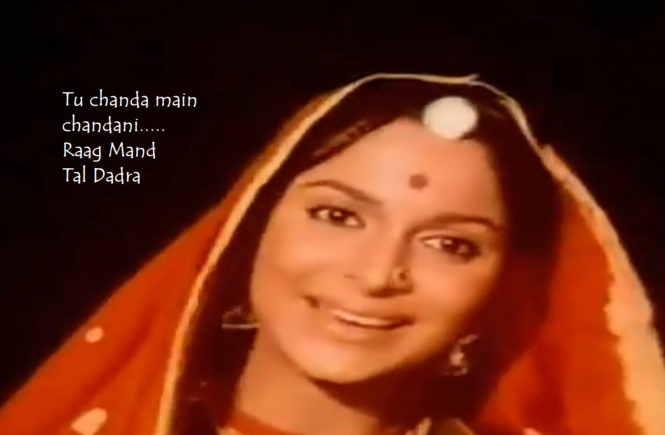
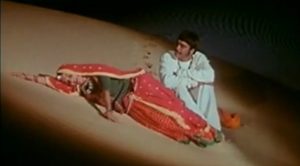 Ladies and gentlemen,
Ladies and gentlemen, 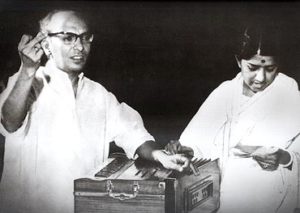
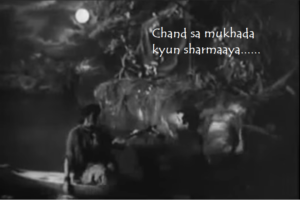 One of the more significant reasons is known to my close friends,
One of the more significant reasons is known to my close friends, 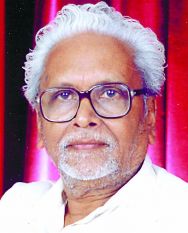

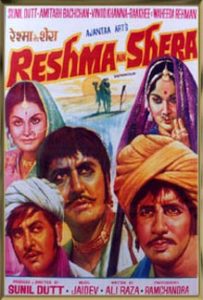
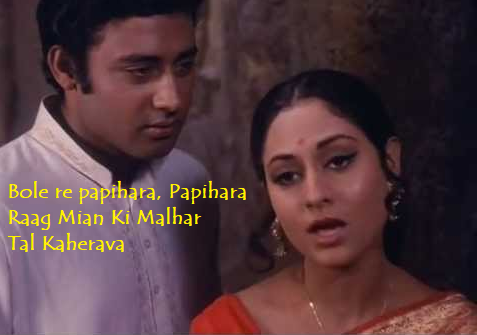
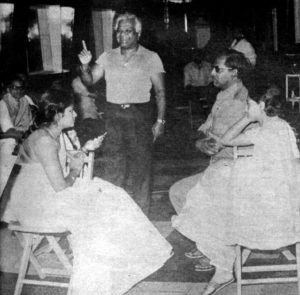
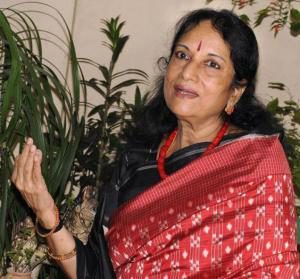 been awarded the National Award for Best Female Playback Singer three times and has won two Filmfare Awrads: One for Best Female Playback Singer in 1980 (for Meera’s song Mere to Giridhar Gopal composed by Pandit Ravi Shankar in Raag Khammaj, Tal Dadra/Hinch) and one in 2013, the South India Filmfare Award for Lifetime Achievement.
been awarded the National Award for Best Female Playback Singer three times and has won two Filmfare Awrads: One for Best Female Playback Singer in 1980 (for Meera’s song Mere to Giridhar Gopal composed by Pandit Ravi Shankar in Raag Khammaj, Tal Dadra/Hinch) and one in 2013, the South India Filmfare Award for Lifetime Achievement.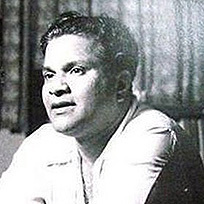
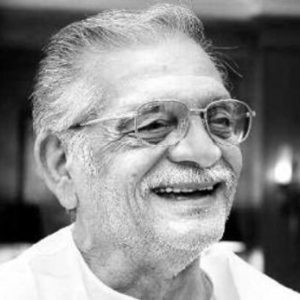
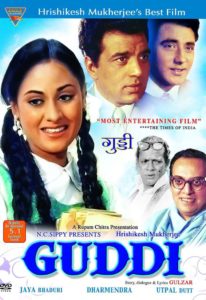
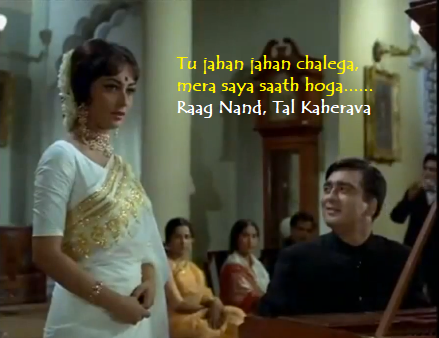
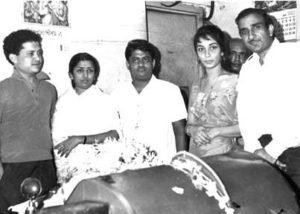
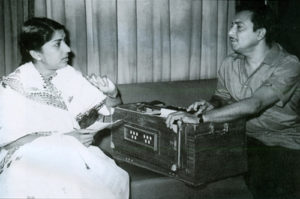 are from
are from 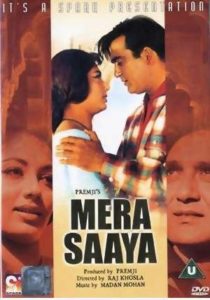
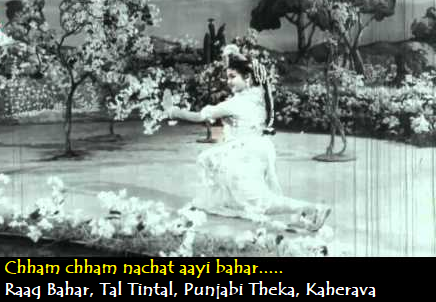
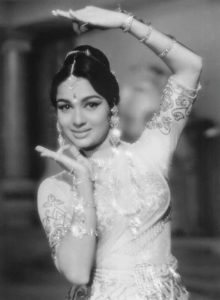
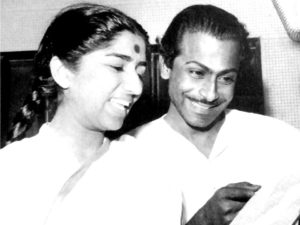
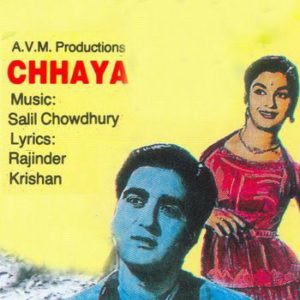
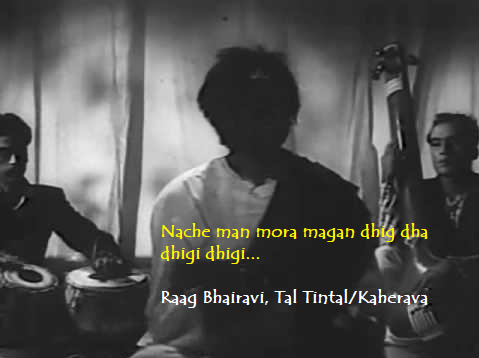
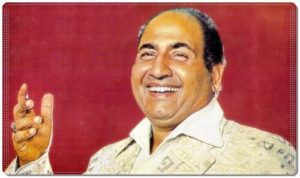 This one is a favourite on many counts. The first one is
This one is a favourite on many counts. The first one is 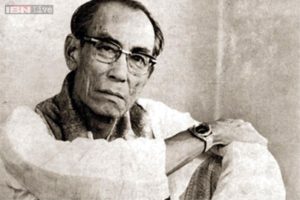 the superb composition by
the superb composition by 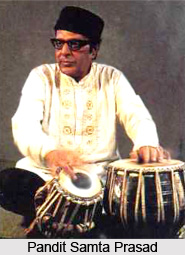
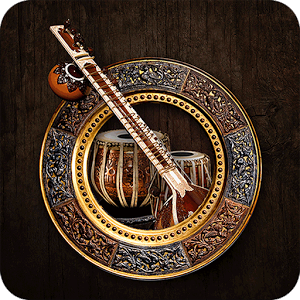 However, first, lets take up the
However, first, lets take up the 